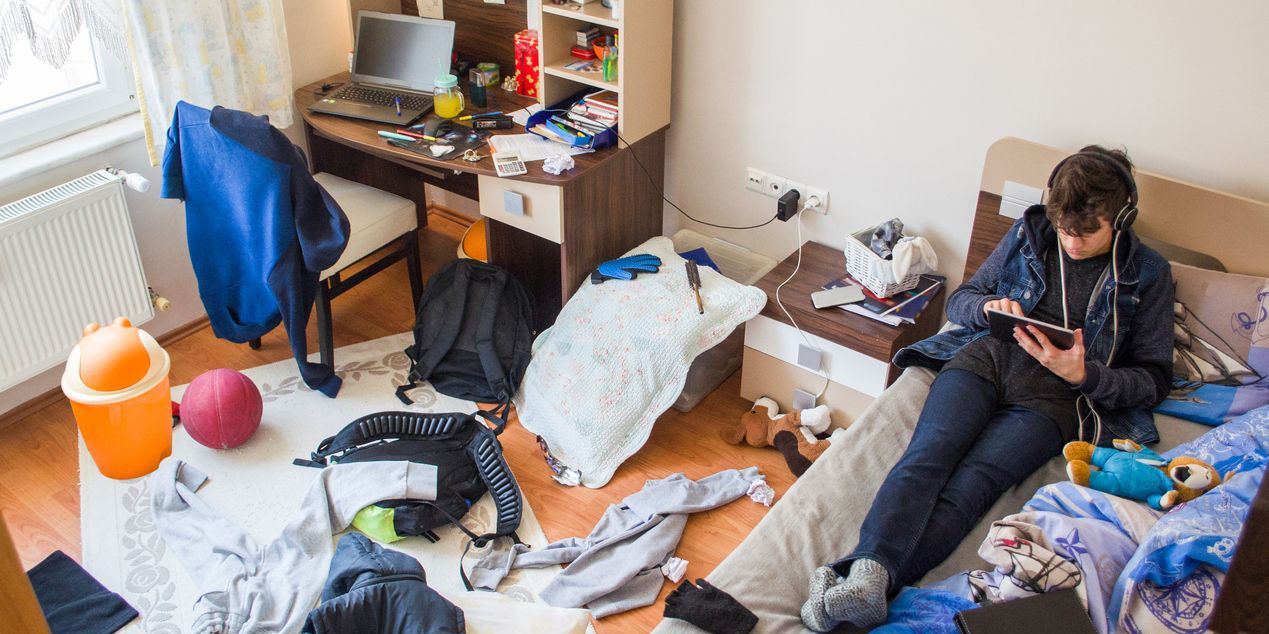Summary: To handle school refusal when a child or teen simply won’t go to school, it’s essential to find the root cause of the behavior. Experts indicate that factors related to the individual, the family, and the school can all contribute to school refusal.
Key Points:
- Evidence shows that between 2% and 5% of school age children and adolescents experience school refusal.
- Truancy, which is often associated with problematic behavior among teens in high school – i.e. substance use/testing boundaries/risky behavior – is not the same as school refusal among school age children.
- When issues such as bullying are involved, parents can handle school refusal by direct communication with the school.
- When mental health issues such as anxiety or fear of separation are involved, professional support and treatment can help resolve school refusal.
What is School Refusal?
The basic answer is in the name itself: school refusal is when a child or teen will not go to school. The treatment guide “School Refusal: Assessment and Intervention” published by the Center on Positive Behavioral Interventions & Supports (CPBIS) offers a slightly more complex, official definition of school refusal:
“School refusal is a child-motivated school attendance problem with various underlying setting events, antecedents, and maintaining consequences or functions of behavior unique to the student, school, and family context.”
They identify the following behaviors related to school refusal:
School Refusal: What Parents See
- Emotional pleas to parents/caregivers to stay home.
- Problematic behavior before school, during the morning routine, in order to prevent or delay leaving for school.
- Physical ailments or maladies that appear in morning, which have no identifiable physical cause.
School Refusal: What Teachers/Administrator See
- Persistent tardiness in the morning or throughout the day.
- Consistent skipping and/or unexcused absence from class.
- Total absence from school for an extended period of time.
The study authors indicate school refusal can lead to the following negative outcomes:
School Refusal: Consequences
- Academic disengagement
- Class failure/poor grades
- Dropping out of high school
- Adult unemployment
- Isolation from friends and activities
- Escalating mental health problems during late childhood/adolescence
- Mental health problems during adulthood
That’s what school refusal is and what the consequences are. But for parents wondering how to handle school refusal, it’s important to understand why it happens.
Why Do Some Kids Refuse to Go to School?
In the treatment guide we introduce above, child development experts identify two types of school refusal:
1. Refusal for Avoidance or Escape
- Kids who refuse to go to school often refuse in order to avoid negative, uncomfortable emotions – most often fear and anxiety – associated with:
- Leaving parents/separation from parents
- Being bullied by peers
- Chaotic environments like the bus and/or assemblies, or unstructured situations like recess, the hallway between classes, and arrival/dismissal times.
- Embarrassment about doing things in front of others
2. Refusal for Access to Preferred Situations
- In some cases, kids refuse to go to school not because of school or emotions related to school, but because they prefer the home environment.
- Younger kids may want to stay home to receive attention from parents
- Younger kids may want to:
- Watch TV
- Play video games
- Hang out online
- Sleep
- Older kids or teens may refuse to go to school because they prefer the absence of adult supervision. This may be driven by a desire to:
- Engage in alcohol or substance use
- Engage in sexual activity
- Push boundaries and experience freedom
When we see these two categories of school refusal, we understand that in some cases, the fix might be a simple matter of establishing clear rules and consequences, or behavioral expectations and outcomes. Parents can handle school refusal of this nature with basic parenting and behavior modification skills: what matters most is clarity, communication, and follow through. However, parents who need to handle school refusal in children or teens who refuse to go to school for emotional reasons face an entirely different situation.
How Do Professionals Diagnose School Refusal?
Mental health experts diagnose school refusal among kinds and teens by using an evaluation tool called the School Refusal Evaluation Screen (SCREEN), developed in 2019 and verified independently by various researchers since then.
School Refusal Evaluation: The SCREEN
- I’m afraid of what others in my class think of me.
- I tell my parents that I don’t want to go to school and I want to stay at home.
- I can’t explain why I can’t go to school.
- When I get to school, I don’t feel well when the time comes to go into the building.
- In class, I’m scared of doing a bad job.
- I’m absent more often this year than last year.
- I feel like I have a mental block when it comes to going to school, as if I won’t be able to.
- In the morning, I don’t want to go to school.
- I often go to the school infirmary or administration office because I don’t feel well.
- I’m fragile and sensitive.
- I’m afraid to go to school.
- I have a hard time going back to school after school vacation.
- I’m frequently absent because I don’t feel well.
- In class, I feel good, I feel comfortable.
- I feel very comfortable with my classmates at school.
- It’s hard for me to go back to school on Mondays.
- I often ask that my parents be called to come pick me up when I’m at school.
- On the way to school, I don’t feel well.
Students answer on a Likert Scale, where “1” means a question “doesn’t apply to me at all” and “5” means “applies to me completely.” When a student scores 41 or higher, they meet criteria for school refusal.
How to Handle School Refusal
The best way to handle school refusal is to find the root cause of the behavior and work to resolve it. The best way to do that is to seek professional support from an experienced child and adolescent psychiatrist or therapist. They can determine whether the root cause of school refusal revolves around the child, the family, or situations in the school.
When the child or teen has anxiety that causes school refusal, effective treatments include:
- Cognitive behavioral therapy (CBT)
- Dialectical behavioral therapy (DBT)
- Exposure-response therapy (ERP)
- Antidepressant or anxiolytic medication
- Antidepressants may help resolve school refusal, but not immediately
- In rare cases, anxiolytic medication may be a viable short-term option
In addition, the following approaches can help a parent handle school refusal associated with anxiety associated with family factors:
- Family therapy
- Behavioral interventions such as:
- Relaxation training
- Social skills training
- Mindfulness
For refusal associated with situations at school such as bullying, direct contact with the school, which may involve parent-teacher conferences, or parent-teacher-student conferences, can help address and resolve the situations the child fears, and can help reduce school refusal. For older teens who refuse to go to school for reasons associated with substance misuse, professional treatment targeted at that specific problem behavior may be necessary.
To handle school refusal among teens who are pushing boundaries or engaging in risky behavior, a professional can help parents with two approaches:
- Contingency management (CM): click here to learn more.
- Behavior contracts: click here to learn more.
Note: behavior contracts have limitations but can be effective for some teens with behavioral issues. We encourage consulting an adolescent psychiatrist for support in creating a behavior contract.
In all situations where a child won’t go to school, the best way to handle school refusal is to start with a full psychiatric evaluation administered by a licensed, experienced mental health professional. When a professional can identify the origin of the behavior, then a collaborative process involving the child or teen, the parent, and the provider can begin. When the child or teen has input, and support from trusted adults, it’s possible to addre


